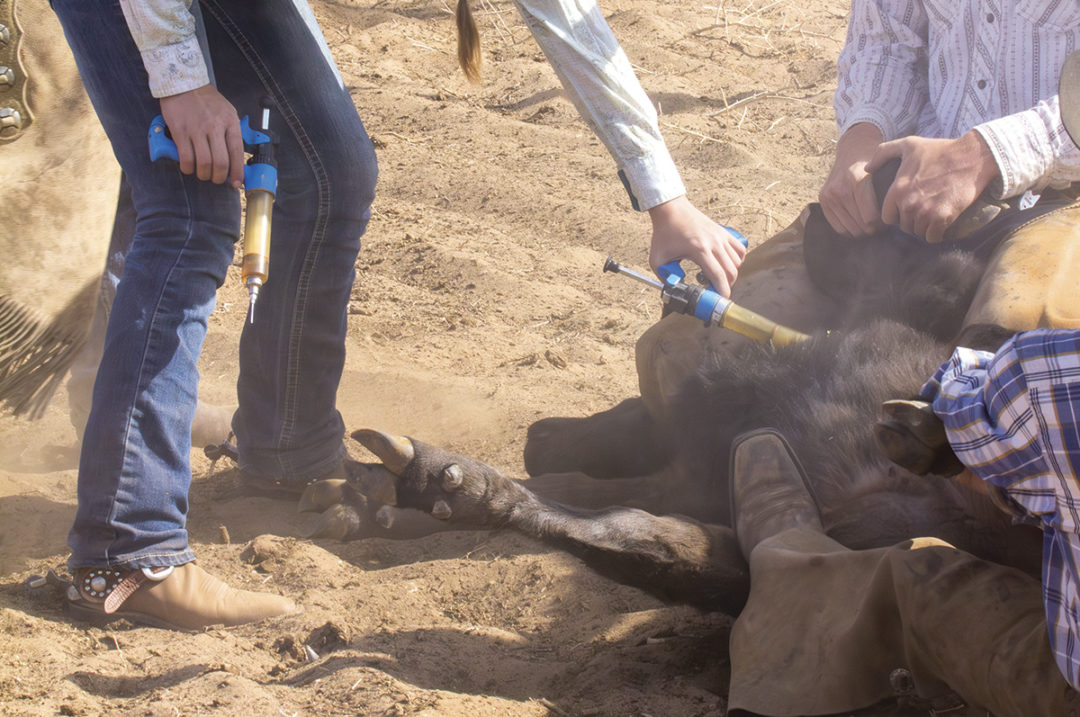In my 25 years as a cattle veterinarian, I’ve seen the impact of bovine respiratory disease (BRD) – the most prevalent and costly challenge facing North American cattle producers – in many operations.
Interestingly, some herds experience significant economic losses to BRD every year, while others seem to consistently be able to avoid these losses. What is the difference?
The herds that work to minimize significant economic losses from respiratory disease have adopted a BRD-resilience mindset and action plan to develop a stronger, more productive and healthier herd. Innovation in genetics, management techniques and disease-preventative tools are interrelated, and when used together, can result in stronger, more productive, disease-resilient herds.
Practices for prevention
The most successful operations I encounter have goals and plans on how they are going to improve in these three areas. Here are some frequent observations on practices they use:
1. They learn and use information related to genetic selection and animal breeding
Understanding and utilizing genetic selection and animal breeding information, especially as it relates to disease incidence, is impactful. Learning how to correctly interpret expected progeny differences (EPD) and data on bulls, and understanding how this will impact the next calf crop, is vital. For commercial producers, understanding the importance of hybrid vigor is important for calf health and performance.
2. They focus on BRD prevention
It is much more profitable to invest in practices and technologies that build BRD resilience than it is to treat an outbreak. After we discover cattle are sick, they are often far down the disease pathway. We are reducing losses at this point versus maximizing productivity, which is not economically sustainable.
3. They realize vaccination is a critical component of BRD prevention, and work with their veterinarian to ensure they are using the latest vaccines
There is now an intranasal, modified-live vaccine that helps protect against both viral and bacterial pneumonia, including against five of the major causes of BRD, including infectious bovine rhinotracheitis (IBR), bovine respiratory syncytial virus (BRSV), parainfluenza-3 (PI3), Pasteurella multocida and Mannheimia haemolytica. It can be given to nursing calves as young as 1 week of age, providing effective immunity in just one dose.
Always vaccinate animals according to the product label and manufacturer recommendations for timing. Ultimately, this is the best way to achieve immunization and dramatically reduce the risk of BRD.
4. They follow a preconditioning program to not only increase the value of their calves but to give them the best opportunity for the next production phase
Merck Animal Health, Superior Livestock Auction and Kansas State University have partnered to evaluate the management decisions, programs and health protocols that drive price per pound paid by buyers. This auction dataset includes information from over 2.5 million head of calves, providing a view into what buyers wanted and how they spoke with their checkbook.
The data shows that preconditioning is one of the most effective strategies for demonstrating advanced calf health and performance. Calves who were weaned at home for 45 days before delivery and vaccinated with two doses of clostridial, two doses of five-way modified-live viruses, and at least one dose of a Mannheimia haemolytica and/or Pasteurella multocida vaccine, added $48 more per head than those who received only one dose of each of the three vaccines and were not weaned at home.
Building BRD resilience is important to building a reputation for selling calves ready to thrive in the next phase of production.
5. They use a strategic deworming program
Not only do internal parasites reduce feed intake in calves – but immune function, including a positive response to vaccination, can be compromised.
It is important to deworm calves cowside. Deworming at earlier stages of infection can result in improved weaning weights. For spring-calving herds, it typically is good to deworm calves six to eight weeks after turnout onto pasture.
Deworming cattle ahead of vaccination doesn’t have to mean a trip through the chute or intensive labor. Using feed and mineral forms of dewormers requires relatively little time and labor and is highly effective.
6. They know BRD resilience starts with the mama cow, so they make sure the cow has adequate nutrition, has been dewormed and is up to date on her vaccinations
Vaccinating cows before calving helps stimulate antibody production, resulting in higher-quality colostrum, ultimately giving calves better protection at birth. For example, administering a scours vaccine five to 12 weeks before calving boosts antibody levels in the cow’s colostrum, providing increased protection from neonatal scours. Ensuring each calf gets adequate colostrum promptly results in stronger calves that grow better.
Gain the rewards of building BRD resilience
Your herd is unique. That’s why it is important to work with a veterinarian who knows your goals and the health challenges in your area. Putting a plan together to build BRD resilience in your calf crop can result in healthier animals, less treatment pressure and more profits.










